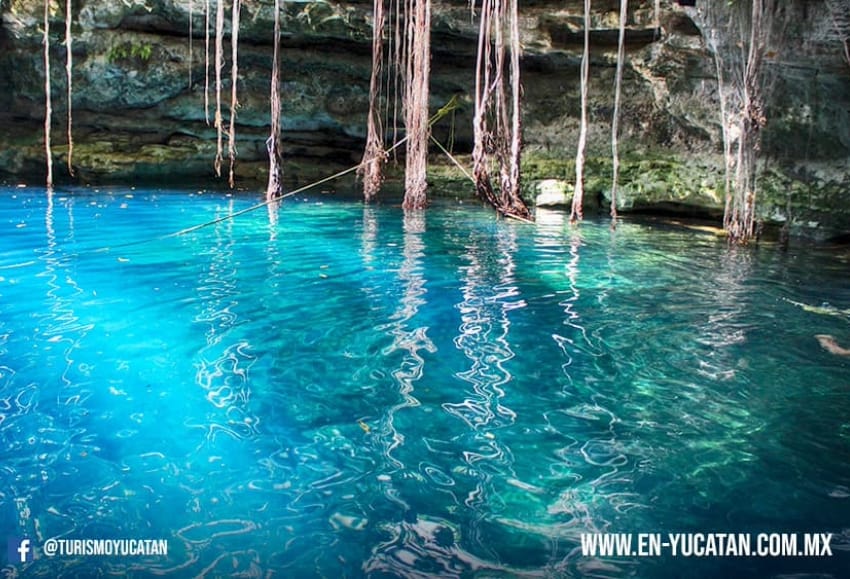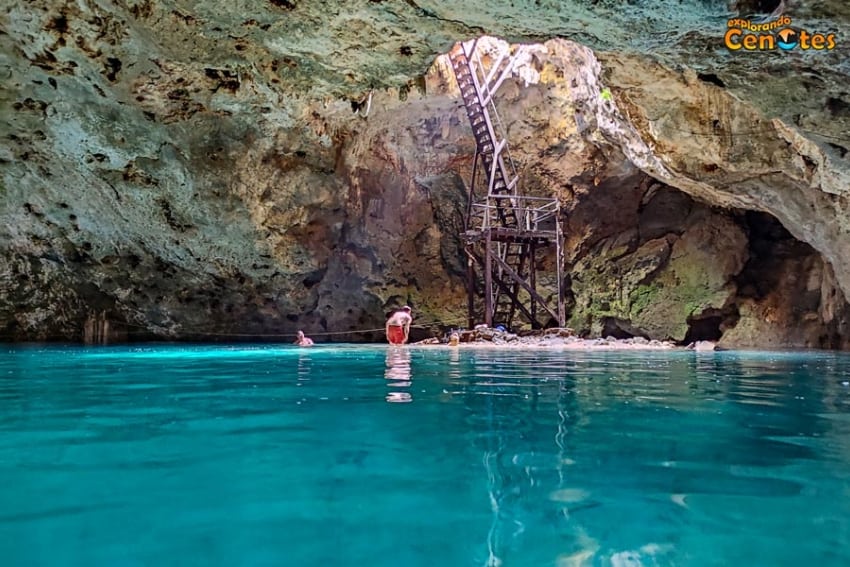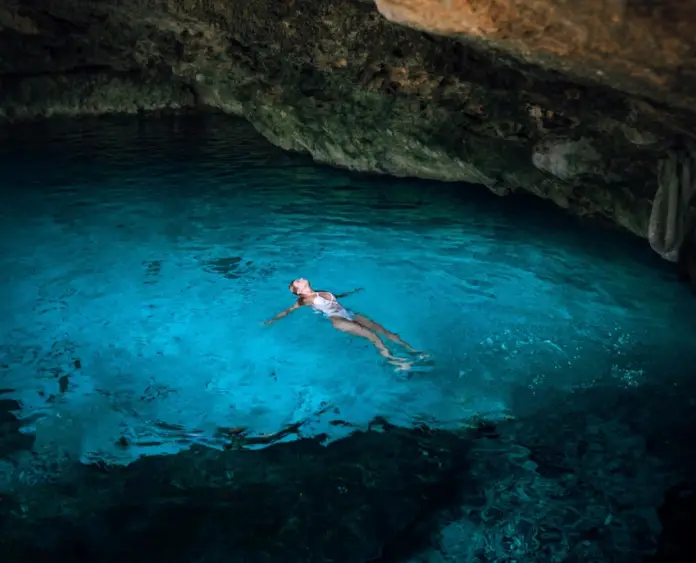When people say cenote, they usually imagine swimming alone in turquoise waters surrounded by natural beauty. But while images of paradise run through our minds, well-known spots tend to be overcrowded and can ruin the experience for some visitors.
Cenotes are natural sinkholes created over the ages as acid rain and sea water dissolved the porous limestone plain we call the Yucatán Peninsula. Paradoxically, although the region receives considerable rainfall and has fertile soil, it is extremely inhospitable to human life because its limestone soil makes its water table inaccessibly low. Some parts of the peninsula, like the Puuc region, have no natural bodies of surface water at all.

One of the great feats of Maya civilization was managing water supply through engineering works like reservoirs to collect rain. The Mayas also collected water from cenotes: the word itself comes from the Yucatec Maya “dzonot,” or “water deposit.”
Tourist agencies in Quintana Roo say that many of the visitors to the Yucatán Peninsula travel to cenotes, some of which see around 1,500 to 2,000 visitors daily. Additionally, the UNESCO World Heritage Site of Chichen Itzá in Yucatán is one of the most popular attractions in Mexico, receiving over two million visitors every year.
There are thousands of hidden cenotes near the ancient Maya city, each with its own distinct flavor and charm. For nature lovers and adventure seekers who prefer to skip the lines, here’s a list of the top five best-kept secret cenotes close to Chichen Itzá.
Cenote Lol-Ha
If there is a place that captures picturesque scenes inspiring legends about the fountain of youth, it would be Lol-Ha. A medium-sized open cenote couched within a quiet village of 800 people, it’s just the place for a relaxing swim away from the crowds. Located just 14 miles from Chichen Itzá, the village of Yaxunah shares its name with a neighboring archaeological site. A key town on an ancient bustling trade route, it is the eastern gateway to the longest known road built by the Maya (over 60 miles). Today, the village is home to the famous Amazonas de Yaxunah, an Indigenous women’s softball team whose players are famous for competing barefoot and wearing a traditional huipil blouse.
Cost: 100 pesos.
How to get there: Taxis and moto taxis from Pisté and Chichen Itzá charge around 100 pesos.
Laguna Verde
The largest cenote on the list is also a place of myth and legend: locals from Libre Unión claim Tzukan, the snake guardian of the cenote, resides in its depths. The serpent spirit is said to create a whirlpool at the center of the lagoon that lifts it vertically into the air. Despite the stories, the Laguna Verde is visited by local families from the nearby villages of Libre Union and Yaxcabá, who come mostly on weekends. Wildlife is abundant on its shores, from tadpoles to colorful fish that harmlessly nip your toes, giving you a free pedicure.
Cost: Free
How to get there: Take a taxi or moto taxi from either Libre Unión (50 pesos) or Yaxcabá (100 pesos).
Cenote X’tojil

Located just a few hundred meters from the Laguna Verde, this medium sized open cenote is not for swimming; it’s for exploring. An astonishingly intact Maya mural – warriors and priests are depicted alongside a frog with water droplets over its head – is carved into its stone walls. Archaeologists believe the ancient Maya held frogs as sacred and associated their calls with the coming of rain. Interestingly, both Cenote X’tojil and the Laguna Verde have large populations of frogs sustained by their interconnected ecosystem today.
Cost: Free
How to get there: Take a taxi or moto taxi from either Libre Union (50 pesos) or Yaxcabá (100 pesos).
Cenote Popolá
This untouched beauty is a little trickier to find, but with some help from friendly locals, it is possible and well worth the effort. An open, medium sized cenote, Popolá can be slightly intimidating to swim in because of its remoteness and wild appearance. It was once renovated for tourism but was left abandoned for some years, so the jungle has slowly reclaimed its edges. It is sometimes possible to find native stingless melipona bees hovering over its turquoise waters, occasionally darting down for a drink. This is the closest cenote to Chichen Itzá on the list.
Cost: for around 80 pesos with local guides at the village ministry.
How to get there: Taxis or moto taxis from Pisté and Chichen Itzá charge around 50 pesos.
Cenote Cantó
If you are a bird watcher, the Cenote Cantó is the place to be. This large, semi-open cenote is visited by all types of tropical winged species, from the Yucatan great horned owl to the shining bluish-green-colored Motmot bird. Roughly between 5 p.m. and 6 p.m., hundreds of birds that come to the cenote to feed on insects create a kind of vortex as they fly, putting on a serene natural spectacle daily. The water at the bottom may be murky and uninviting, but for those who want to see how crucial cenotes are to the jungle ecosystem, Cenote Cantó is the perfect choice.
Another tricky place to find that may require the services of a local guide.
Cost: Free
How to get there: Walk about 40 minutes or bike for around 15 from downtown Valladolid – there are plenty of rental bikes available.
Some of the cenotes on this list may not be for the faint-hearted, and it is always prudent to take extra caution when visiting those in remote areas.
Mark Viales writes for Mexico News Daily.
